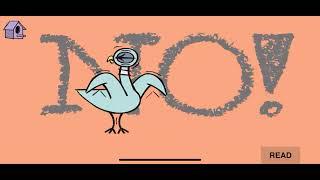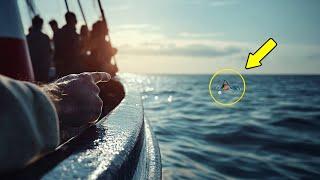Комментарии:

This is so interesting.
Ответить
So educational. I feel a little smarter with each of your video. # keep creating ;)
Ответить
Eris diameter is 2326 km while Pluto's is 2376 km. They are roughly of the same size. Eris is somewhat more massive, though. I knew Eris was larger than Pluto, had to double check the numbers. It is more massive while sizes are almost identical.
Ответить
Pluto will always be a planet to me. Just being sentimental lol.
Ответить
It's crazy to think back when we were still using muskets we were also proving (what I consider) incredibly precise measuring (planetary wobble) and complex maths by hand.
Ответить
This is exactly why I don't consider small dogs to be real dogs!
Ответить
Why does this only have 855 views? Great stuff
Ответить
I wish I’d had you as one of my science teachers when I was still in school, your videos are amazing and I’ve always had a massive interest in all sciences! I hope these videos reach your students and that at least some of them go on to study sciences from your teachings! Keep up the fantastic and brilliant work mate
Ответить
Are you from Bolton?
Ответить
i simply adore the little douglas adams references <3
Ответить
I wonder what Tombaugh would've thought.
Ответить
Kieper belt ( sp?)... must be passed through in order to reach other Solar System....
because space ship will need to utilize plane ... on which planets are rotating ..in order to use large body gravitational force.
How much is the plane deviated from by
other planets...?

This bothers me way more than it should. So now…my very excellent mother just served us nine…what? Nine what? Why can’t Pluto be grandfathered in with the Planet list? Rant over… as you were!
Ответить
Hehe.. Skywalker, Vader, Leia crators 😄
Ответить
ask Jerry😁
Ответить
The last Planet criteria is rubbish, pardon my pun. It means that if the orbit of Pluto changed to inside Neptune, it would be a planet. So what is and what is not a planet is partially based on its location rather than physical characteristics alone.
Ответить
Pluto is a planet because it has a Sailor Guardian. That is the most scientifically accurate way to differentiate a planet.
Ответить
Vid idea: Talk about Altair, a fast-spinning F-Type Star
Ответить
You describe well the reasons the IAU gives for "demoting" Pluto. But really, I question the IAU's reasons. Was politics the real reason? Well, there was politics in the IAU, rapidly expanding to the world. But that's not the argument I want to make.
I've always found the third criterion - "must clear its orbit" - to be suspect. That's not at all as fundamental to the body as the fact that it has sufficient mass - therefore gravity - to make its shape round. The shape is inarguable, self-evident, and requires no judgement call such as "when is an orbit cleared?". No artificially-established rules to be monitored!
While Pluto clearly hasn't cleared its orbit, isn't it also true that Neptune hasn't cleared its orbit? After all, Pluto freely crosses Neptune's orbit without being dominated by Neptune. And if Neptune were at some future time to kick Pluto out of its orbit, or capture it as a moon, does that then mean Neptune then - and only then - gets to be a planet? And why, really? This rule just seems arbitrary, as well as argumentative. (And it only got 60% of the vote - hardly a scientific measure of confirmation.)
But a physicist I recently encountered asked another question that I find intriguing: "What's the big deal about a planet orbiting the sun?" Does that apply only to our own star? No, couldn't be: too ridiculous. So a planet orbits its own star. What if it exists in a binary, ternary, or even larger stellar system? Does it mark "its own" star by orbiting it - and not the others? But what if it orbits two stars? Seems ok for a binary system, but what if that's two stars out of three in a ternary system? Etc, etc? Finally, if something happens to destabilize an entire system and a planet is thrown entirely out of orbit into the void, is it still a planet? Again, this characteristic seems arbitrary.
The only real requirement I can see for being a planet is that it's big enough to be round! That's the thing that applies everywhere, all the time, to any individual celestial body, that is inherent in the planet itself , and not dependent on something else to characterize it. I think the IAU made a big mistake.
Instead, after making roundness the single defining feature, I see the other features (perhaps) as a means to classifying sub-categories of planets. (Level 1 [orbits]. Subcategories: Orbits one star, orbits two, orbits three, orbits all stars in system, or not. Level 1 [domination] Subcategories: Dominates its orbit, or not.) And why stop there? Why are some moons not also planets? Why does the orbit have to be around a star? Why does there need to be an orbit at all? Do we have any proof there are no "rogue planets" out in interstellar or intergalactic space? And given the operations of black holes in the universe, how could there not be? If the body is round, it's basically a world. If a person lands on it, there is gravity enough to hold a person there, a horizon to look over, a sense of distance to dwarf the person and become perceptually an environment. And if there's too much gravity, or no solid surface to land, any approach will clearly be an approach to a world, and likely a very exciting environment. So round moons are a subcategory of planet. And if there are any such, a round moon of a moon a subcategory of that.
And Phobos and Deimos ought to take their proper classifications as asteroids orbiting a planet, leaving moons properly classified as planets that orbit a planet (therefore round). When I look up at our wonderful planet-moon, it irks that such a particle as Phobos could be called a moon also! Consider the 145 moons of Saturn (a number that grows by leaps and bounds)! Some are worlds, and some (many) are asteroids. Its orbital companions are already divided by scientists into three categories: "major moons", "prograde moons" (orbit in the direction of Saturn's rotation), and "retrograde moons" (retrograde orbit). Those categories are used to assign moon names from one of three groupings of names selected because of those characteristics. The IAU's system is out of date already.
Finally, I do object to one demotion: that is the diminishment of respect that is due to Clyde Tombaugh, discoverer of Pluto. That was first-rate science as well as luck, and years of painstaking, meticulous work. Pluto still is what Pluto always was, and his fame should rightfully continue.

It might not technically be a planet.... but it's still a planet in our hearts.
Ответить
I heard that further out from Pluto's orbit we find other Ice bodies relatively the same size. In fact their actually in abundance out there.
Ответить
It'd be neat if we could have a satellite stationed permanently around Pluto to see if (and by how many) objects it is impacted and interacts with. Seeing as it spends so much of its orbit plowing through the Kuiper Belt, it must see many more objects than we inner-solar system planets do. Whether it is considered a planet or not, it's still a fascinating object and it would be great to get more missions out there to it.
Ответить
😊😊
Ответить
Bro how do you create these images
Ответить


























